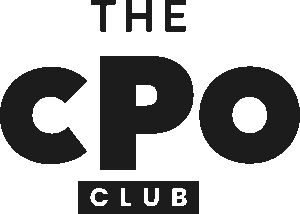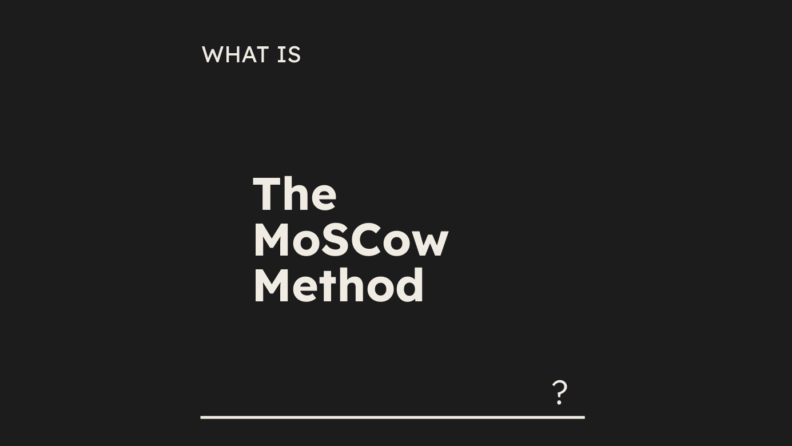As a product manager, you know the importance of an effective prioritization technique when you’re deciding on what to work on first. The MoSCoW prioritization method is a linchpin in Agile project management that can help you sort through your to-do list and make informed decisions.
What is the MoSCoW Prioritization Method?
The MoSCoW method guides decision-making in project management by prioritizing tasks into four categories:
- Must have
- Should have
- Could have
- Won’t have
The MoSCoW prioritization method is essential for product managers in Agile environments, where flexibility and adaptability are key. I recommend pairing this framework with a product management tool like Mira that allows for visualization and collaboration.
Must Have: Non-Negotiable Essentials
'Must-haves' are the non-negotiable, essential functionalities that your new product or software development project can't do without. They are your deal-breakers, the backbone of your product features, and the foundation of your product release.
Should Have: High-Impact, Manageable Effort
The 'Should have' category is crucial for a balanced approach in Agile project management. Should have requirements are important product features or functionalities that provide significant value but aren't deal-breakers. They enhance the user experience and are often seen as the 'nice to have' elements that don’t cause scope creep.
Could Have: Nice Extras When You Have Enough Time
'Could haves' are the cherry on top of your project delivery. These features would be great to include if you have enough time and resources. Could have requirements are often included in the backlog for future release considerations.
Won’t Have: Not This Time Around
The 'Won’t have' category is just as important in your MoSCoW analysis. These features or initiatives won’t be part of the current iteration or product release. They are often set aside for subsequent phases or iterations of the product development cycle.
Where Does The Term MoSCoW Come From?
The term MoSCoW method is not related to the Russian capital. It's an acronym crafted by Dai Clegg during his time at Oracle. The method was later popularized through the Dynamic Systems Development Method (DSDM) methodology.
When To Use The MoSCoW Prioritization Method
The MoSCoW method is adaptable and can be used across various projects and industries. It’s especially effective in Agile project management, where the workflow is iterative, and priorities can shift. Here are some scenarios where the MoSCoW method shines:
- When managing a tight timeframe with limited resources.
- In product development, where clear categorization of product features is essential.
- For managing a backlog effectively in software development.
- To create a clear roadmap and prevent scope creep.
- When balancing the needs of key stakeholders and team members.
Pros and Cons of the MoSCoW Method
Pros:
- Enhanced Communication: It facilitates clear communication among team members and stakeholders.
- Flexibility: Ideal for Agile environments where priorities can shift.
- Focus on MVP: Helps in defining the minimum viable product effectively.
Cons:
- Possible Neglect of Lower Priorities: 'Could haves' and 'Won’t haves' might be perpetually postponed.
- Subjectivity in Categorization: Sometimes, there can be disagreements among stakeholders and team members on the categorization of tasks.
Drawbacks of Using The MoSCoW Method
MoSCoW isn’t without its limitations. The same simplicity that makes it easy to adopt can also create blind spots for product teams.
Subjectivity and bias are the biggest concerns. Deciding what belongs in “Must have” versus “Should have” often depends on who’s in the room, and the loudest voices or short-term pressures can skew decisions. Without clear, shared criteria, teams risk letting politics outweigh product strategy.
Another drawback is the lack of rationale behind rankings. The framework doesn’t require teams to justify why an item was placed in a given category. Without documentation or supporting evidence, it’s hard to revisit these decisions later or explain them to stakeholders.
Finally, MoSCoW can feel like an oversimplification. Reducing complex initiatives to four categories strips away nuance—some “Should haves” might actually be critical for competitive advantage, while certain “Could haves” could have disproportionate customer impact.
These criticisms don’t make the method unusable, but they highlight the importance of applying MoSCoW thoughtfully. Still, many teams find it valuable as a quick, accessible starting point—as long as they supplement it with clear criteria and stakeholder alignment.
Examples Of How The MoSCoW Prioritization Method Is Used
In Software Development:
- 'Must haves' might include critical functionalities like user authentication and data security.
- 'Should haves' could involve advanced user stories that improve the user interface.
- 'Could haves' might include additional integrations with third-party services.
- 'Won’t haves' might encompass experimental features that are slated for a future release.
In Launching a New Product:
- 'Must haves' would be the features that define the product’s unique selling proposition.
- 'Should haves' might include additional services that enhance customer satisfaction.
- 'Could haves' could be innovative features that aren’t essential for the initial launch.
- 'Won’t haves' are those features that are deferred to avoid scope creep.
Best Practices for Implementing MoSCoW
Using MoSCoW effectively requires more than just sorting features into four categories. To get the full value, teams need to set clear rules, involve the right voices, and keep the process visible and evolving.
1. Establish Objective Criteria
One of the most common challenges with MoSCoW is subjectivity. To reduce debates and ensure consistent decisions, define objective criteria for each category before you start. For example, agree on what truly qualifies as a “Must have” versus a “Should have.” Having these rules in place reduces bias and gives your team a shared framework to guide decisions throughout the project.
2. Involve Stakeholders Early
MoSCoW decisions affect more than just product managers and engineers. Involving stakeholders from different functions—such as marketing, operations, or customer support—brings diverse perspectives into the prioritization process. This broadens understanding of customer needs, surfaces risks earlier, and builds buy-in from the people who will rely on or be impacted by the final product.
3. Maintain Transparency Throughout
Transparency is key to building trust around prioritization. Document your decisions, share the criteria you’ve applied, and explain why certain items fall into “Won’t have” for now. When stakeholders understand how choices were made, they’re less likely to challenge priorities later. Transparency also sets clearer expectations across teams, reduces misalignment, and makes it easier to defend decisions when roadmaps inevitably shift.
4. Revisit and Adjust Regularly
Priorities change as projects evolve. What was once a “Could have” may become a “Should have” after user feedback or shifting market conditions. Schedule regular reviews—whether at the end of a sprint, release cycle, or milestone—to ensure the MoSCoW categories stay aligned with reality.
5. Tie Priorities to Business Goals
To avoid treating MoSCoW as a purely tactical exercise, link each category back to broader business objectives. “Must haves” should map directly to strategic outcomes like compliance, customer retention, or revenue growth. This keeps the method grounded in impact, not just convenience.
6. Communicate Consistently
Transparency works best when it’s ongoing. Share updates to your prioritization in sprint reviews, planning sessions, or stakeholder check-ins. A consistent communication cadence prevents surprises, manages expectations, and reinforces confidence in the process.
When applied with these practices—objective rules, broad input, transparency, iteration, business alignment, and consistent communication—MoSCoW becomes far more than a simple prioritization exercise. It evolves into a living framework that drives alignment, fosters trust, and keeps product development moving in the right direction.
Guidelines for Balancing MoSCoW Priorities
The MoSCoW method works best when teams not only categorize requirements but also agree on how to balance effort across those categories. Clear agreements upfront, contingency planning, and practical effort guidelines help ensure smoother execution and fewer disputes down the line.
1. Agree on Priorities Upfront
Before a project begins, it’s critical to establish how each category will be applied. Teams should define what separates a “Should have” from a “Could have,” and get consensus from all stakeholders on those definitions. MoSCoW prioritization reduces the risk of conflict later, streamlines discussions, and ensures everyone is working from the same playbook.
2. Build in Contingency
No project runs exactly as planned. That’s why MoSCoW is structured to provide flexibility: if time or resources become constrained, “Could haves” and some “Should haves” can be dropped without jeopardizing the delivery of the essential “Must haves.” Building contingency into the plan gives teams confidence that core outcomes can still be delivered even when circumstances shift.
3. Allocate Effort Proportionally
To make MoSCoW actionable, teams should also think about effort allocation. As a rule of thumb, the majority of resources should focus on “Must haves,” while a smaller percentage goes toward “Should haves” and “Could haves.” A practical guideline is to reserve around 60% of effort for “Must haves,” 20%–30% for “Should haves,” and 10%–20% for “Could haves.” This balance creates enough contingency to ensure the essentials are delivered, while still leaving room for added value features if time and resources allow.
By agreeing on definitions, maintaining contingency, and allocating effort intentionally, teams can apply the MoSCoW method more effectively and with greater confidence in achieving project goals.
The Bottom Line on The MoSCoW Method
In summary, the MoSCoW method is a strategic approach to decision-making in product management. This prioritization technique ensures you have a clear roadmap, with each initiative thoughtfully categorized. By applying the MoSCoW rules, product managers and development teams can navigate through the complexities of project delivery, ensuring that each iteration, each product release, delivers maximum value on time. So, embrace the MoSCoW prioritization method, and watch your projects transform into a streamlined Agile workflow.
Don't forget to subscribe to our newsletter for more product management resources and guides, plus the latest podcasts, interviews, and other insights from industry leaders and experts.



